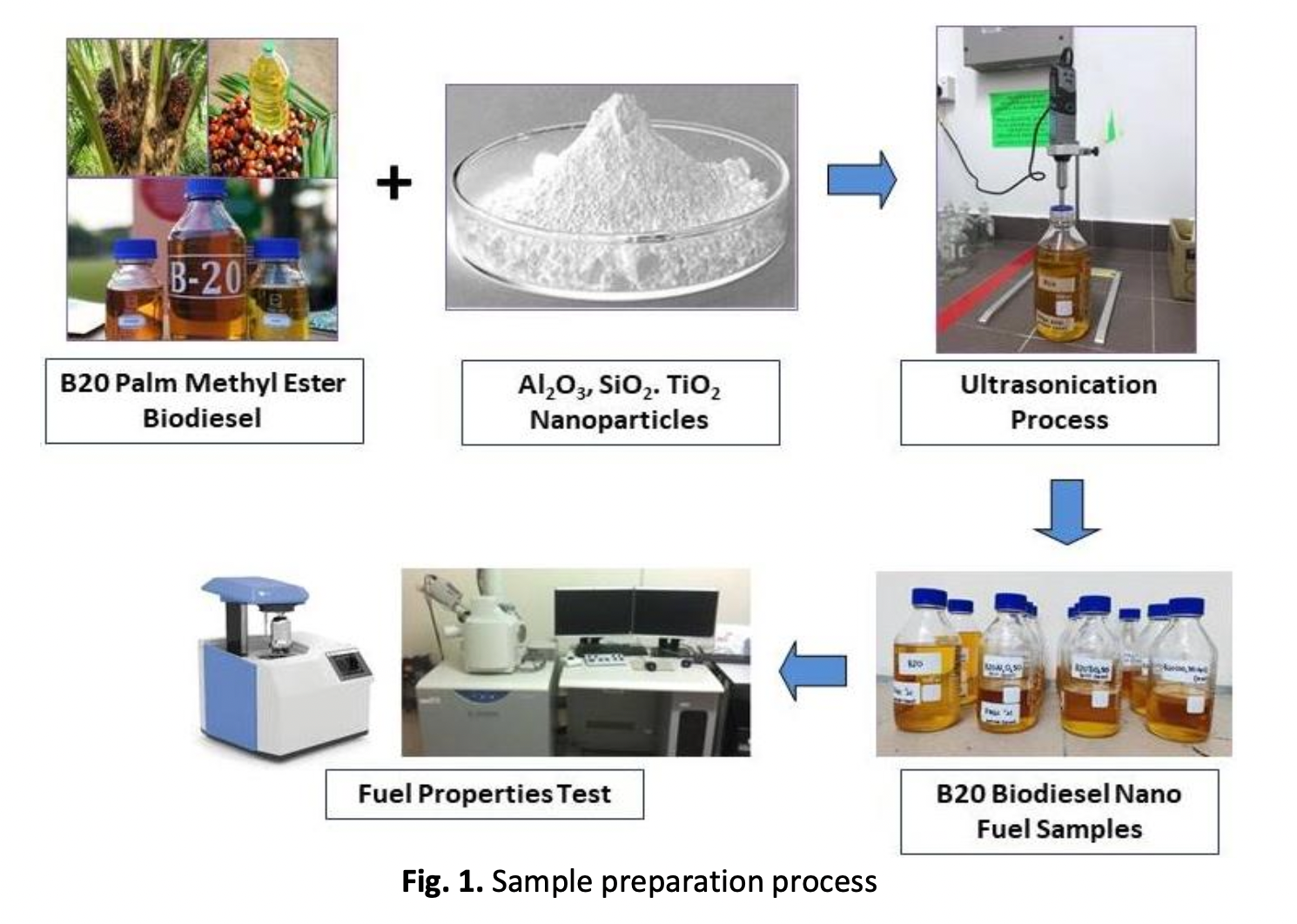Properties Study of B20 Palm-Methyl Ester Biodiesel Added with Oxide Nanoparticle towards Green Marine Fuels
DOI:
https://doi.org/10.37934/araset.29.2.212222Keywords:
Palm biodiesel, Nanoparticle, Marine diesel engine, Fuel properties, Green fuelsAbstract
Demand for low carbon emissions in the shipping sector has prompted alternative energy sources to reduce dependence on diesel petroleum for day-to-day operations. Biodiesel fuel has been identified as one of the alternative energy sources that can be used in marine engines. Biodiesel is a plant-based fuel, environmentally friendly, renewable, non-toxic and oxygenated. Despite having many advantages, it nevertheless contributes to a slight reduction in engine power due to its low energy content compared to diesel fuel. Therefore, this study aims to evaluate the effect of using different types of nanoparticle additives with different concentrations on the properties of biodiesel fuel. Nine test samples were prepared by blending B20 palm methyl ester biodiesel fuel with aluminium oxide (Al2O3), silicon dioxide (SiO2) and titanium dioxide (TiO2) nanoparticle by different concentrations of 50 ppm, 100 ppm and 150 ppm. Several series of fuel property tests were performed on the samples including density, viscosity, calorific value, scanning electron microscope (SEM) and X-ray diffraction (XRD). The test results showed that, the caloric value of B20 biodiesel fuel was increased from 44747 J/g to 45122 J/g, 45090 J/g and 45110 J/g with the addition of Al2O3, SiO2 and TiO2 nanoparticle, respectively. The viscosity and density properties have also improved with the highest values found on the SiO2 blend of 3.7792 mm2/s and 820.36 kg/m3. The morphology study revealed that the structure of nanoparticles is in an amorphous state which is expected to contribute a large contact area, good stability and catalytic with a high combustion rate of blend fuel. All of these advantages are expected to contribute as a good catalyst to biodiesel fuel in order to produce optimal combustion of marine diesel engines and further reduce harmful gas emissions
Downloads




























